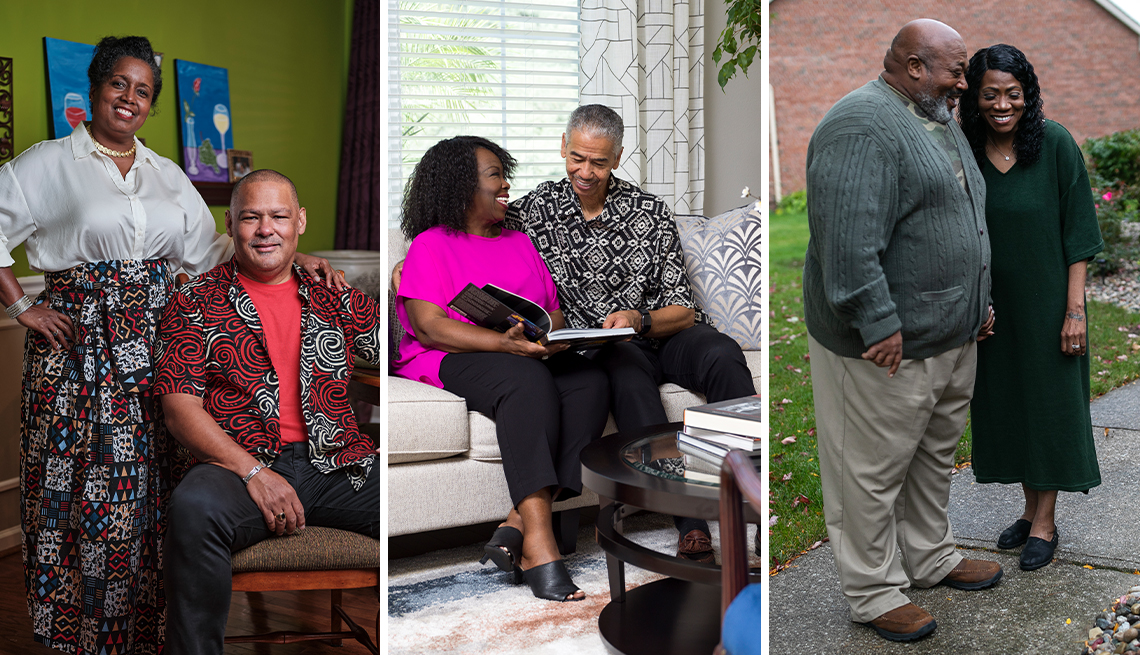AARP Hearing Center


Chris Woods didn’t grow up in a household that trusted financial institutions.
His father grew up in the South when Jim Crow laws restricted where Black people could learn, eat, shop and bank. As an adult, when his father wanted to buy a house, he had to cope with redlining — the practice of denying Black homebuyers access to loans or entrée to particular neighborhoods.
“African Americans who are aging now, the boomer generation, a lot of them didn’t seek that financial advice because of their lack of trust in institutions,” says Woods, an adviser himself at Silvis Financial, a firm he founded in Charlotte, North Carolina. “I think in the Black community, it’s not something that was modeled for us by our parents, in a lot of cases.”
That may help explain why Black Americans are less likely to use a financial adviser than white people in similar economic circumstances. In a 2023 survey by Allianz Life of adults with incomes of $50,000 or more or at least $150,000 in investable assets, 36 percent of Black respondents say they have an adviser, compared with 47 percent of whites.


A historic distrust of financial institutions is far from the only reason many African Americans struggle to save enough for retirement. Black families, on average, have lower incomes and homeownership rates than white families, undercutting two of the main ways for Americans to build retirement security and generational wealth.
Black families seeking professional help from advisers who share their understanding and personal experience of inequality face a bleak landscape. Less than 2 percent of certified financial planners (CFPs) are African American, according to the CFP Board, which grants the designation.
Nationwide, just 22 federally insured banks have Black majority ownership or control, according to data from the Federal Deposit Insurance Corp. There are 37 Black-owned investment and asset management firms, according to the Association of Black Foundation Executives (ABFE), a philanthropic organization that advocates for investment in Black communities.
Discrimination, lack of trust and fewer sources of financial advice add up to enormous problems building lasting wealth for Black families. “You can see how it becomes this baked-in system, with every generation having less to pass down to the next generation,” Jonathan Welburn, a researcher at the Rand Corp., says in a May 2023 essay on the organization’s blog.
The problem isn’t intractable. Though the racial gap in median household wealth remains wide (and persistent, barely narrowing since the 1970s), average net worth for Black families has grown considerably in the past few years. Many African Americans, such as Woods, are doing quite well. And a range of institutions work to put more and better wealth-building tools in Black hands.
Bringing wealth home
Housing is the backbone of many Americans’ wealth, but for Black families, making this game-changing investment can be especially challenging. The homeownership rate for Black Americans is 44 percent, compared with 72.7 percent for whites, according to the National Association of Realtors (NAR). It’s the largest racial gap in homeownership in a decade.
Where to Find Housing Help
The federal Fair Housing Act prohibits discrimination in housing-related activities, including selling or renting a home, providing mortgages or appraising property. You can take these steps if you believe you have experienced housing discrimination:
- File a complaint with the U.S. Department of Housing and Urban Development, which enforces the Fair Housing Act.
- You can report mortgage lending discrimination to the Consumer Financial Protection Bureau.
- Contact the nonprofit National Fair Housing Alliance (NFHA) or one of its local partner agencies, which advocate for victims of housing discrimination. In some cases, the NFHA can send out testers to see if there’s evidence of discrimination in renting, selling or lending.
One reason the gap has grown is that overall housing affordability is at near-record lows because of a surging housing market and rising mortgage rates. That hits families with lower incomes and fewer assets especially hard. NAR estimates that 17 percent of white renters can afford to buy the median-priced home, but only 9 percent of Black renters can. About 1 in 6 Black borrowers took money from their retirement accounts to buy a home, more than any other racial or ethnic group.
Then there’s just plain discrimination. A quarter of Black homebuyers report that either an owner or real estate agent refused to show them certain properties, and 2 in 5 say they have been discriminated against in a home appraisal, a 2023 NAR study found. Only 6 percent of real estate brokers are Black, and their white counterparts earn almost three times as much as they do, according to NAR.
According to the Boston College Center for Retirement Research, 80 percent of working-age minority renters have less than $5,000 in cash. Black and Hispanic homeownership rates would increase significantly if the people who earn enough to pay a mortgage every month also had $25,000 for a down payment. The Black homeownership rate would jump from 36 percent to about 44 percent. Fortunately, financial help for first-time and low-income homebuyers is more widely available than it was a generation ago, and these programs can be a big help for African American homebuyers as well.




































































More From AARP
3 Tips to Help You Negotiate Salary
Some groups tend to be paid less. This advice can help3 Couples Talk About Retiring While Black
3 couples, three solutions to retirementIs My Money Safe?
Insurance protects many investments, but not all